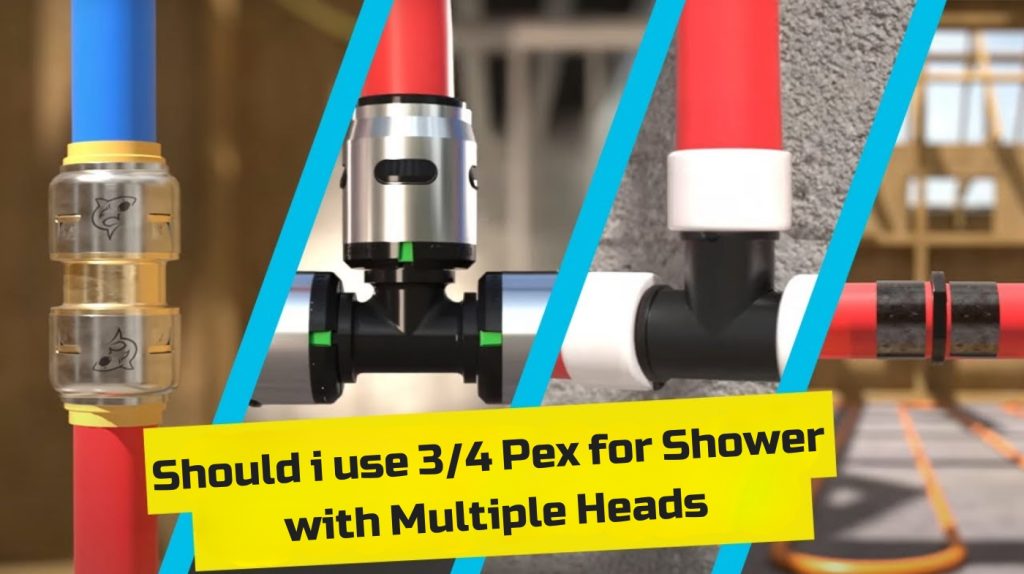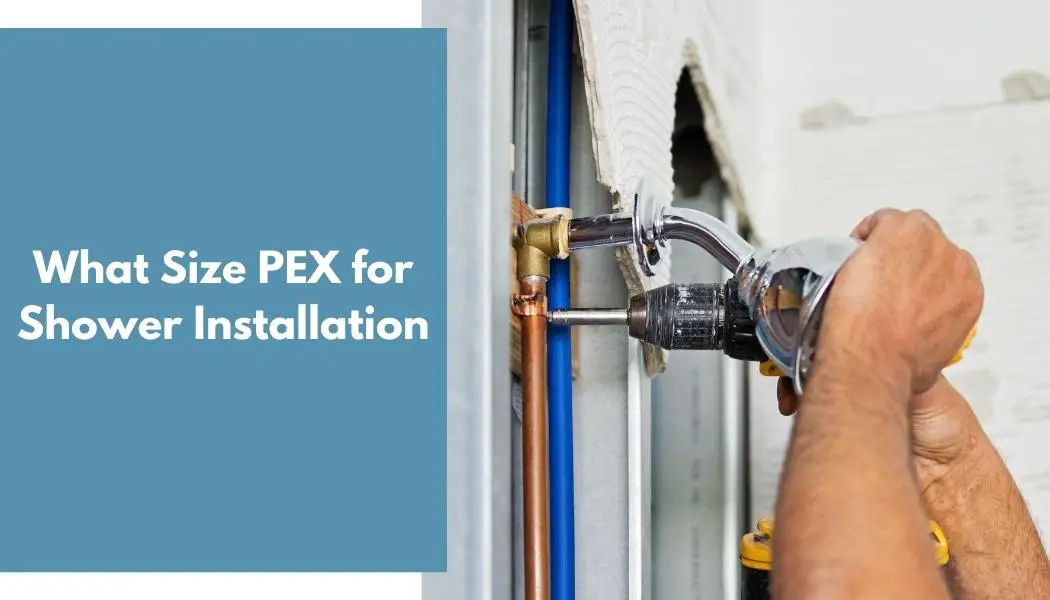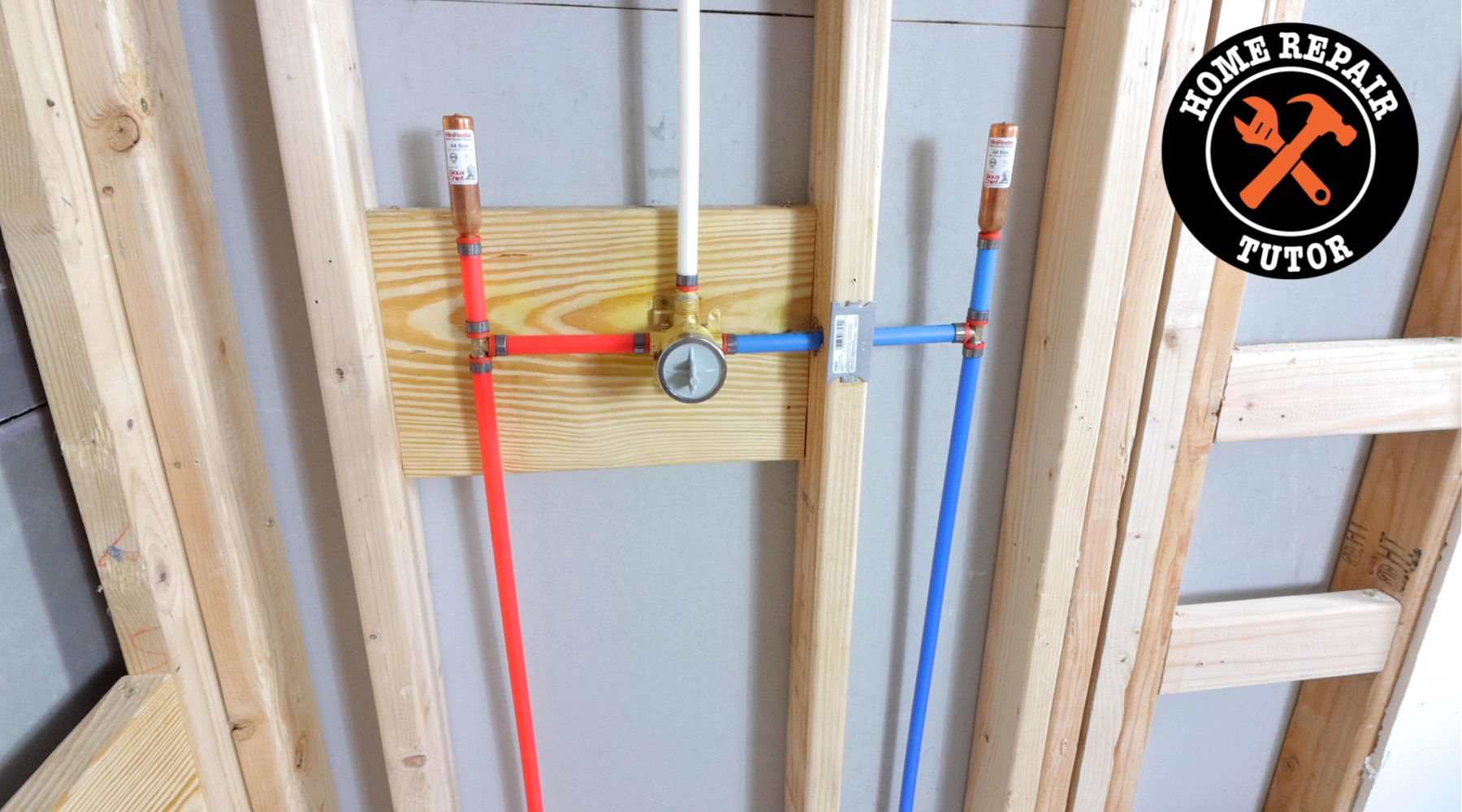Should I Use 3/4 Pex For Shower With Multiple Heads

Choosing the right size of PEX tubing for your shower, especially when it has multiple showerheads, is crucial for ensuring a comfortable and enjoyable showering experience. Using the wrong size can lead to low water pressure, inconsistent temperatures, and frustration. This guide will help you determine if 3/4" PEX is the right choice for your multi-head shower system.
Understanding the Importance of Pipe Size
Think of plumbing pipes like roads. A narrow road (small pipe) can only handle so much traffic (water flow) before it becomes congested. A wider road (larger pipe) can handle more traffic without significant slowdowns. In plumbing, undersized pipes restrict water flow, leading to poor performance. Similarly, significantly oversized pipes can increase material costs without offering substantial benefits in residential applications.
The primary goal is to deliver adequate water pressure and flow rate to all showerheads simultaneously. Insufficient flow means a weak shower, while fluctuating temperatures indicate inadequate hot water supply.
Factors to Consider When Sizing PEX for a Shower
Several factors influence the optimal PEX size for your shower system:
1. Number of Showerheads and Their Flow Rates
This is the most critical factor. Each showerhead has a flow rate, usually measured in gallons per minute (GPM). This information is typically printed on the showerhead or its packaging. A standard showerhead often has a flow rate of 2.5 GPM, but some newer, water-saving models may use as little as 1.5 GPM. High-flow showerheads and body sprays can have significantly higher flow rates (3 GPM or more). Add up the flow rates of all showerheads that might be used simultaneously. This gives you the total flow rate requirement for your shower system.
2. Distance from the Main Water Supply
The longer the distance the water has to travel, the more pressure it loses due to friction within the pipe. This is known as pressure drop. Longer runs require larger diameter pipes to minimize pressure loss. A shower close to the main water supply might be less susceptible to pressure issues than one located further away.
3. Water Pressure in Your Home
Your home's existing water pressure is a key determinant. Measure your water pressure using a pressure gauge connected to an outdoor faucet or washing machine valve. Ideally, your home's water pressure should be between 40 and 60 psi (pounds per square inch). If your water pressure is consistently low (below 40 psi), you may need to take additional steps to boost it, regardless of the pipe size you choose. Conversely, very high pressure (above 80 psi) can damage plumbing fixtures and should be addressed with a pressure reducing valve.
4. Pipe Material: PEX vs. Copper
PEX and copper have different internal diameters for the same nominal size. This affects their flow capacity. PEX has a slightly smaller inner diameter than copper, which means it can carry slightly less water. While the difference is usually marginal for shorter runs, it becomes more significant over longer distances.
5. Number of Fixtures on the Same Line
Consider whether other fixtures (sinks, toilets, washing machines) are connected to the same water line as the shower. If these fixtures are used simultaneously, they will draw water and reduce the pressure available for the shower. This is especially important to consider when determining the peak demand on your system.
Is 3/4" PEX the Right Choice?
Generally, 3/4" PEX is often a good choice for a shower with multiple heads, especially if the total flow rate requirement is relatively high (e.g., exceeding 5 GPM) or the distance from the main water supply is significant. However, it's not a one-size-fits-all answer. Here's a more detailed breakdown:
When 3/4" PEX is a Good Option:
- High Flow Rate Showerheads: If your shower features multiple high-flow showerheads or body sprays with a combined flow rate of 5 GPM or more.
- Long Pipe Runs: If the shower is located far from the main water supply line (e.g., more than 50 feet).
- Low Water Pressure: If your home has naturally low water pressure (below 40 psi). While 3/4" PEX won't *increase* the pressure, it will help minimize pressure loss due to friction.
- Multiple Fixtures Sharing the Line: If other fixtures are frequently used on the same water line.
- Future-Proofing: If you anticipate adding more showerheads or fixtures in the future.
When 1/2" PEX Might Be Sufficient:
- Low Flow Rate Showerheads: If you're using water-saving showerheads with a combined flow rate of 3 GPM or less.
- Short Pipe Runs: If the shower is close to the main water supply (e.g., less than 20 feet).
- Good Water Pressure: If your home has good water pressure (50 psi or higher).
- Minimal Simultaneous Use: If other fixtures on the same line are rarely used at the same time as the shower.
Using a Hybrid Approach
It's also possible to use a hybrid approach, where you run a 3/4" PEX main line to the shower and then reduce it to 1/2" PEX for the individual showerhead connections. This can provide a balance between adequate flow and cost-effectiveness. The 3/4" main line ensures sufficient water volume is available, while the 1/2" connections are typically adequate for individual showerheads.
Calculating Pressure Drop
A crucial step in determining the correct PEX size is calculating the pressure drop. This involves using formulas or online calculators to estimate how much pressure will be lost as the water flows through the pipes. These calculations take into account the pipe length, flow rate, pipe material (PEX), and the number of fittings (elbows, tees, etc.). Many online PEX sizing calculators can help you perform this calculation. Search for "PEX pressure drop calculator." These calculators usually require you to input the following information:
- Flow Rate (GPM): The total flow rate of all showerheads used simultaneously.
- Pipe Length (Feet): The total length of the PEX pipe from the water source to the shower.
- Pipe Size (Inches): Try both 1/2" and 3/4" to see the difference in pressure drop.
- Number of Fittings: Estimate the number of elbows, tees, and other fittings in the line. Each fitting adds to the overall pressure drop.
- Water Temperature: This affects the water's viscosity, which in turn affects pressure drop.
The calculator will then output the estimated pressure drop in psi. Ideally, you want to keep the pressure drop below a certain threshold. A generally accepted rule of thumb is to aim for a pressure drop of no more than 5-10 psi. If the pressure drop for 1/2" PEX is significantly higher than this, then 3/4" PEX is likely a better choice.
Example Scenario
Let's consider a scenario where you have a shower with two showerheads, each with a flow rate of 2.0 GPM, for a total flow rate of 4.0 GPM. The distance from the main water supply is 40 feet, and your home's water pressure is 45 psi.
Using an online PEX pressure drop calculator, you might find that:
- 1/2" PEX: Results in a pressure drop of 12 psi. This is likely too high and could result in noticeable pressure loss at the showerheads.
- 3/4" PEX: Results in a pressure drop of 3 psi. This is within the acceptable range and should provide adequate pressure.
In this scenario, 3/4" PEX would be the recommended choice.
Installation Considerations
Installing 3/4" PEX requires a slightly larger investment in materials (pipe, fittings, and tools). While PEX is generally easier to install than copper, working with larger diameter PEX can be a bit more challenging, especially in tight spaces.
PEX Tools: Ensure you have the appropriate tools for working with PEX, including a PEX cutter, crimp tool (or expansion tool, depending on the PEX system you're using), and PEX crimp rings (or expansion rings).
Fittings: Use high-quality PEX fittings that are compatible with the PEX tubing you've selected. Avoid using mismatched fittings, as this can lead to leaks.
Support: Properly support the PEX tubing at regular intervals to prevent sagging and potential damage.
When to Consult a Professional Plumber
If you're unsure about any aspect of sizing or installing PEX for your shower, it's always best to consult with a licensed plumber. A plumber can assess your specific situation, perform accurate pressure drop calculations, and ensure that the plumbing system is installed correctly and safely. This is especially recommended if you're dealing with complex plumbing configurations, low water pressure issues, or if you're not comfortable working with plumbing yourself. A professional can also ensure that your installation complies with local plumbing codes.
Conclusion
Choosing the right PEX size for your multi-head shower is essential for optimal performance. While 3/4" PEX is often a good choice, it's crucial to consider factors like flow rate, distance, and water pressure. By carefully evaluating these factors and calculating the pressure drop, you can make an informed decision that ensures a satisfying and enjoyable showering experience. When in doubt, consulting with a qualified plumber is always the best approach.










